Hubert Bancroft - The Native Races [of the Pacific states], Volume 1, Wild Tribes
Здесь есть возможность читать онлайн «Hubert Bancroft - The Native Races [of the Pacific states], Volume 1, Wild Tribes» — ознакомительный отрывок электронной книги совершенно бесплатно, а после прочтения отрывка купить полную версию. В некоторых случаях можно слушать аудио, скачать через торрент в формате fb2 и присутствует краткое содержание. ISBN: , Жанр: foreign_antique, foreign_prose, на английском языке. Описание произведения, (предисловие) а так же отзывы посетителей доступны на портале библиотеки ЛибКат.
- Название:The Native Races [of the Pacific states], Volume 1, Wild Tribes
- Автор:
- Жанр:
- Год:неизвестен
- ISBN:http://www.gutenberg.org/ebooks/41070
- Рейтинг книги:5 / 5. Голосов: 1
-
Избранное:Добавить в избранное
- Отзывы:
-
Ваша оценка:
- 100
- 1
- 2
- 3
- 4
- 5
The Native Races [of the Pacific states], Volume 1, Wild Tribes: краткое содержание, описание и аннотация
Предлагаем к чтению аннотацию, описание, краткое содержание или предисловие (зависит от того, что написал сам автор книги «The Native Races [of the Pacific states], Volume 1, Wild Tribes»). Если вы не нашли необходимую информацию о книге — напишите в комментариях, мы постараемся отыскать её.
The Native Races [of the Pacific states], Volume 1, Wild Tribes — читать онлайн ознакомительный отрывок
Ниже представлен текст книги, разбитый по страницам. Система сохранения места последней прочитанной страницы, позволяет с удобством читать онлайн бесплатно книгу «The Native Races [of the Pacific states], Volume 1, Wild Tribes», без необходимости каждый раз заново искать на чём Вы остановились. Поставьте закладку, и сможете в любой момент перейти на страницу, на которой закончили чтение.
Интервал:
Закладка:
The third hypothesis, derived mainly from the writings of Lamarck, Darwin, and Huxley, is based upon the principle of evolution. All existing species are developments of some preëxisting form, which in like manner descended by true generation from a form still lower. Man, say they, bears no impress of a divine original that is not common to brutes; he is but an animal, more perfectly developed through natural and sexual selection. Commencing with the spontaneous generation of the lowest types of vegetable and animal life, – as the accumulation of mold upon food, the swarming of maggots in meat, the infusorial animalcules in water, the generation of insect life in decaying vegetable substances, – the birth of one form arising out of the decay of another, the slow and gradual unfolding from a lower to a higher sphere, acting through a long succession of ages, culminate in the grandeur of intellectual manhood. Thus much for this life, while the hope of a like continued progress is entertained for the life to come. While the tendency of variety in organic forms is to decrease, argue these latter-day naturalists, individuals increase in a proportion greater than the provisional means of support. A predominating species, under favorable circumstances, rapidly multiplies, crowding out and annihilating opposing species. There is therefore a constant struggle for existence in nature, in which the strongest, those best fitted to live and improve their species, prevail; while the deformed and ill-favored are destroyed. In courtship and sexual selection the war for precedence continues. Throughout nature the male is the wooer; he it is who is armed for fight, and provided with musical organs and ornamental appendages, with which to charm the fair one. The savage and the wild beast alike secure their mate over the mangled form of a vanquished rival. In this manner the more highly favored of either sex are mated, and natural selections made, by which, better ever producing better, the species in its constant variation is constantly improved. Many remarkable resemblances may be seen between man and the inferior animals. In embryonic development, in physical structure, in material composition and the function of organs, man and animals are strikingly alike. And, in the possession of that immaterial nature which more widely separates the human from the brute creation, the 'reasonable soul' of man is but an evolution from brute instincts. The difference in the mental faculties of man and animals is immense; but the high culture which belongs to man has been slowly developed, and there is plainly a wider separation between the mental power of the lowest zoöphyte and the highest ape, than between the most intellectual ape and the least intellectual man. Physically and mentally, the man-like ape and the ape-like man sustain to each other a near relationship; while between the mammal and the mollusk there exists the greatest possible dissimilarity. Articulate language, it is true, acting upon the brain, and in turn being acted upon to the improvement of both, belongs only to man; yet animals are not devoid of expedients for expressing feeling and emotion. It has been observed that no brute ever fashioned a tool for a special purpose; but some animals crack nuts with a stone, and an accidentally splintered flint naturally suggests itself as the first instrument of primeval man. The chief difficulty lies in the high state of moral and intellectual power which may be attained by man; yet this same progressive principle is likewise found in brutes. Nor need we blush for our origin. The nations now most civilized were once barbarians. Our ancestors were savages, who, with tangled hair, and glaring eyes, and blood-besmeared hands, devoured man and beast alike. Surely a respectable gorilla lineage stands no unfavorable comparison.
Between the first and the last of these three rallying points, a whole continent of debatable land is spread, stretching from the most conservative orthodoxy to the most scientific liberalism. Numberless arguments may be advanced to sustain any given position; and not unfrequently the same analogies are brought forward to prove propositions directly oppugnant. As has been observed, each school ranks among its followers the ablest men of science of the day. These men do not differ in minor particulars only, meeting in general upon one broad, common platform; on the contrary, they find themselves unable to agree as touching any one thing, except that man is, and that he is surrounded by those climatic influences best suited to his organization. Any one of these theories, if substantiated, is the death-blow of the others. The first denies any diversity of species in creation and all immutability of race; the second denies a unity of species and the possibility of change in race; the third denies all special acts of creation and, like the first, all immutability of race.
PLANTS AND ANIMALS.The question respecting the origin of animals and plants has likewise undergone a similar flux of beliefs, but with different result. Whatever the conclusions may be with regard to the origin of man, naturalists of the present day very generally agree, that there was no one universal centre of propagation for plants and animals; but that the same conditions of soil, moisture, heat, and geographical situation, always produce a similarity of species; or, what is equivalent, that there were many primary centres, each originating species, which spread out from these centres and covered the earth. This doctrine was held by early naturalists to be irreconcilable with the Scripture account of the creation, and was therefore denounced as heretical. Linnæus and his contemporaries drew up a pleasing picture, assigning the birth-place of all forms of life to one particular fertile spot, situated in a genial climate, and so diversified with lofty mountains and declivities, as to present all the various temperatures requisite for the sustenance of the different species of animal and vegetable life. The most exuberant types of flora and fauna are found within the tropical regions, decreasing in richness and profusion towards either pole; while man in his greatest perfection occupies the temperate zone, degenerating in harmony of features, in physical symmetry, and in intellectual vigor in either direction. Within this temperate zone is placed the hypothetical cradle of the human race, varying in locality according to religion and tradition. The Caucasians are referred for their origin to Mount Caucasus, the Mongolians to Mount Altai, and the Africans to Mount Atlas. Three primordial centres of population have been assigned to the three sons of Noah, – Arabia, the Semitic; India, the Japetic; and Egypt, the Hamitic centre. Thibet, and the mountains surrounding the Gobi desert, have been designated as the point from which a general distribution was made; while the sacred writings mention four rich and beautiful valleys, two of which are watered by the Tigris and Euphrates, as the birth-place of man. It was formerly believed that in the beginning, the primeval ocean covered the remaining portion of the globe, and that from this central spot the waters receded, thereby extending the limits of terrestrial life.
Admitting the unity of origin, conjecture points with apparent reason to the regions of Armenia and of Iran, in western Asia, as the cradle of the human race. Departing from this geographical centre, in the directions of the extremities of the continent, the race at first degenerated in proportion to distance. Civilization was for many ages confined within these central limits, until by slow degrees, paths were marked out to the eastward and to the westward, terminating the one upon the eastern coast of Asia, and the other upon the American shores of the Pacific.
PRIMORDIAL CENTERS.Concerning the distribution of plants and animals, but one general opinion is now sustained with any degree of reason. The beautifully varied systems of vegetation with which the habitable earth is clothed, springing up in rich, spontaneous abundance; the botanical centres of corresponding latitudes producing resemblance in genera without identity of species; their inability to cross high mountains or wide seas, or to pass through inhospitable zones, or in any way to spread far from the original centre, – all show conclusively the impossibility that such a multitude of animal and vegetable tribes, with characters so diverse, could have derived their origin from the same locality, and disappearing entirely from their original birth-place, sprung forth in some remote part of the globe. Linnæus, and many others of his time, held that all telluric tribes, in common with mankind, sprang from a single pair, and descended from the stock which was preserved by Noah. Subsequently this opinion was modified, giving to each species an origin in some certain spot to which it was particularly adapted by nature; and it was supposed that from these primary centres, through secondary causes, there was a general diffusion throughout the surrounding regions.
Читать дальшеИнтервал:
Закладка:
Похожие книги на «The Native Races [of the Pacific states], Volume 1, Wild Tribes»
Представляем Вашему вниманию похожие книги на «The Native Races [of the Pacific states], Volume 1, Wild Tribes» списком для выбора. Мы отобрали схожую по названию и смыслу литературу в надежде предоставить читателям больше вариантов отыскать новые, интересные, ещё непрочитанные произведения.
Обсуждение, отзывы о книге «The Native Races [of the Pacific states], Volume 1, Wild Tribes» и просто собственные мнения читателей. Оставьте ваши комментарии, напишите, что Вы думаете о произведении, его смысле или главных героях. Укажите что конкретно понравилось, а что нет, и почему Вы так считаете.
![Hubert Bancroft The Native Races [of the Pacific states], Volume 1, Wild Tribes обложка книги](/books/750126/hubert-bancroft-the-native-races-of-the-pacific-s-cover.webp)

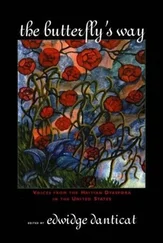
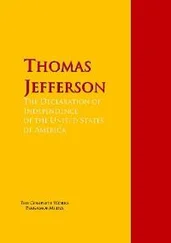
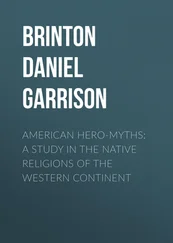

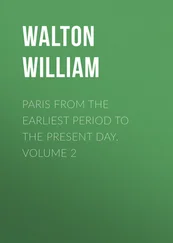

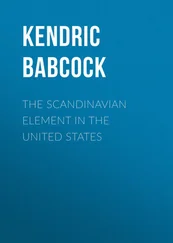
![Hubert Bancroft - The Native Races [of the Pacific states], Volume 5, Primitive History](/books/749157/hubert-bancroft-the-native-races-of-the-pacific-s-thumb.webp)


